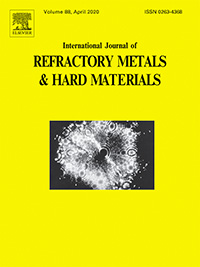The „International Journal of Refractory Metals and Hard Materials“ magazine edited by Elsevier B.V. has published an article entitled:
“The role of chromium in the corrosion performance of cobalt- and cobalt-nickel based hardmetal binders: A study centred on X-ray absorption microspectroscopy”
M.Sc. Sandra Tedeschi and dr. Gian Pietro De Gaudenzi of the HI.Lab laboratory participated in the research activity together with a pool of experts from different universities and scientific fields. An important part of the experimental work was carried out at Elettra, the Italian particle accelerator located near Trieste. The contribution of the Politecnico di Milano and the staff of two particle accelerators in Europe (Elettra and Diamond in the United Kingdom) were fundamental.
The following collaborated and partook in the study:
- Benedetto Bozzini, Full Professor of Applied Physical Chemistry at the Energy Department of the Politecnico di Milano;
- Alessandra Gianoncelli, Head of TwinMic Beamline, George Kourousias, computational mathematician, and Maya Kiskinova, coordinator of the research projects, who worked as a team at Elettra Sincrotrone in Trieste;
- Majid Kazemian Abyaneh, Beamline Scientist at the Scanning X-ray Microscopy Beamline of the Diamond synchrotron from Didcot, Oxfordshire (UK);
- Marco Boniardi, Full Professor of Metallurgy, and Andrea Casaroli, contract professor, at the Mechanics Department of the Politecnico di Milano;
- Simone Dal Zilio and Rafaqat Hussain of IOM-CNR, Basovizza, Trieste;
- Claudio Mele, Professor at the Department of Innovation Engineering of the University of Salento in Lecce.
 The following is an abstract of the article:
The following is an abstract of the article:
The corrosion control of WC-Co type hardmetals is steadily gaining momentum for novel crucial applications in the Oil & Gas and food industries. The corrosion rate of the Co-based binder, and the extent to which coupling to WC speeds it up, are strongly influenced by alloying. In this paper, we investigate the impact of Cr on the corrosion-product film formation of Co- and CoNi based hardmetal binders in acidic, neutral and alkaline aqueous solutions. We centred our study on the role of Cr in driving the distribution of oxidized Co and Ni at the micrometre scale, thanks to synchrotron-based soft-X ray microspectroscopy. We have investigated morphochemical distributions for the following grades: Co96Cr4, Co48Ni48Cr4, Co50Cr50. Chemical-state mapping has been complemented by electrochemical measurements and metallographic observations. Amounts of Cr and Ni of ca. 50% notably increase the corrosion resistance in all ambients, with a stronger beneficial effect of the former element. 4% addition of Cr results in slight positive effects, with the exception of the CoNi system in alkaline ambient, that, together with Co50Cr50, outperforms the other grades. In all investigated alloy-ambient combinations, a continuous oxidized metal film grows, onto which micrometric island form of shape and dimensions that depend on the specific grade and aggressive conditions. Quantitative descriptors of chemical-state maps and their theoretical interpretation in terms of electrochemical phase-formation by oxy-hydroxide precipitation, allow to correlate the island patterns with the degree of pseudopassivation.
The full text is available online for free until August 20, 2020 at the following link: https://authors.elsevier.com/c/1bKN0xvWg64YF
